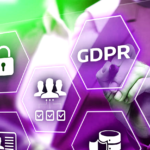In the ever-evolving landscape of the modern workplace, remote engineering communication has become a pivotal aspect of project success. As teams collaborate across different geographical locations, the challenges posed by varying time zones and cultural differences cannot be ignored.
Challenges in Remote Engineering Communication
Table of Contents
- 1 Challenges in Remote Engineering Communication
- 2 Impact on Team Collaboration
- 3 Strategies for Effective Time Zone Management
- 4 Understanding Cultural Differences
- 5 Building a Global Team Culture
- 6 Communication Best Practices
- 7 Technology Solutions for Remote Communication
- 8 Case Studies: Successful Remote Engineering Teams
- 9 Training and Development Programs
- 10 Balancing Work-Life Integration
- 11 Measuring Success in Remote Communication
- 12 Future Trends in Remote Engineering Communication
- 13 Conclusion
- 14 FAQs
Time Zone Discrepancies
One of the primary challenges faced by remote engineering teams is the significant difference in time zones. Coordination of meetings and real-time collaboration becomes a complex task when team members are spread across the globe.
Cultural Nuances and Potential Misunderstandings
Cultural differences add another layer of complexity to communication. Misinterpretations of gestures, language nuances, and work approaches can hinder effective collaboration among team members from diverse cultural backgrounds.
Impact on Team Collaboration
Communication barriers arising from time zone differences and cultural nuances can have a profound impact on overall team collaboration. Delays in responses, misunderstandings, and lack of synchronization can affect project timelines and deliverables.
Read More : Drastically Boost Sales with a User-Friendly Website
Strategies for Effective Time Zone Management
Utilizing Scheduling Tools
Implementing scheduling tools that account for different time zones helps streamline meetings and ensures that team members can participate at convenient times.
Implementing Flexible Working Hours
Encouraging flexible working hours allows team members to align their work schedules with overlapping hours, fostering real-time collaboration.
Encouraging Asynchronous Communication
Promoting asynchronous communication through collaborative platforms allows team members to contribute at their own pace, minimizing the impact of time zone differences.
Understanding Cultural Differences
Importance of Cultural Awareness
Cultural awareness is crucial for remote teams. Understanding the cultural nuances of team members promotes empathy and effective communication.
Common Cultural Variations in Communication Styles
Acknowledging and respecting variations in communication styles, such as directness or indirectness, can enhance the clarity of messages.
Building a Global Team Culture

Fostering Inclusivity
Creating an inclusive environment that embraces diversity fosters a sense of belonging among team members, transcending geographical boundaries.
Conducting Virtual Team-Building Activities
Organizing virtual team-building activities helps strengthen bonds among team members, overcoming physical distance and cultural disparities.
Communication Best Practices
Clear and Concise Communication
Emphasizing clear and concise communication reduces the chances of misunderstandings. Avoiding jargon and using straightforward language enhances comprehension.
Regular Check-Ins and Updates
Frequent check-ins and project updates maintain a sense of connectivity among remote team members, ensuring everyone is on the same page.
Technology Solutions for Remote Communication
Collaboration Platforms
Utilizing collaboration platforms centralizes communication, making it easier for remote teams to share documents, discuss projects, and stay connected.
Video Conferencing Tools
Video conferencing tools facilitate face-to-face interactions, bridging the gap created by physical separation and promoting a more personal connection.
Case Studies: Successful Remote Engineering Teams
Highlighting real-life examples of companies that have successfully navigated remote communication challenges provides valuable insights and inspiration for others.
Training and Development Programs
Providing Cultural Sensitivity Training
Incorporating cultural sensitivity training programs equips team members with the skills needed to navigate diverse work environments effectively.
Continuous Learning for Remote Team Members
Encouraging continuous learning ensures that remote team members stay updated on best practices and emerging trends in remote communication.
Balancing Work-Life Integration
Setting Boundaries
Establishing clear boundaries between work and personal life helps prevent burnout and maintains the well-being of remote team members.
Promoting Well-being in a Remote Work Environment
Prioritizing the well-being of remote employees through wellness programs and mental health support contributes to a healthier and more productive work environment.
Measuring Success in Remote Communication
Key Performance Indicators for Remote Teams
Defining key performance indicators (KPIs) specific to remote teams enables organizations to track and measure success effectively.
Feedback and Improvement Strategies
Regular feedback loops and strategies for continuous improvement empower remote teams to adapt and enhance their communication practices.
Future Trends in Remote Engineering Communication
Technological Advancements
Exploring emerging technologies and tools that can further improve remote communication and collaboration.
Evolving Work Structures
Examining the evolving landscape of remote work structures and their impact on the future of engineering communication.
Read More : 3 Rules for Scaling Content Using AI without Losing Quality
Conclusion
In conclusion, managing time zones and cultural differences in remote engineering communication is an ongoing process that requires adaptability and continuous improvement. By implementing effective strategies, embracing cultural awareness, and leveraging technology, remote teams can overcome challenges and foster successful collaboration.
FAQs
- How can scheduling tools help manage time zone differences?
- Scheduling tools allow teams to coordinate meetings based on the availability of members in different time zones, optimizing communication.
- What are the benefits of asynchronous communication in remote teams?
- Asynchronous communication provides flexibility, allowing team members to contribute at their own pace, minimizing the impact of time zone differences.
- How can companies promote cultural awareness among remote teams?
- Companies can promote cultural awareness through training programs, encouraging open dialogue, and fostering an inclusive work culture.
- What role do video conferencing tools play in remote communication?
- Video conferencing tools facilitate face-to-face interactions, enhancing personal connections and reducing the sense of physical distance.
- How do flexible working hours contribute to effective remote collaboration?
- Flexible working hours enable team members to align their schedules, fostering real-time collaboration and improving overall team efficiency.




